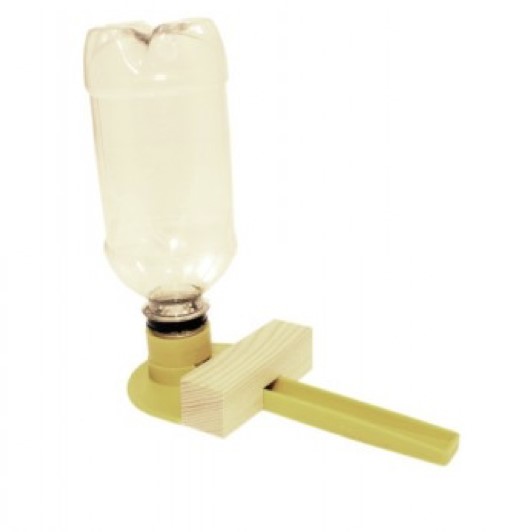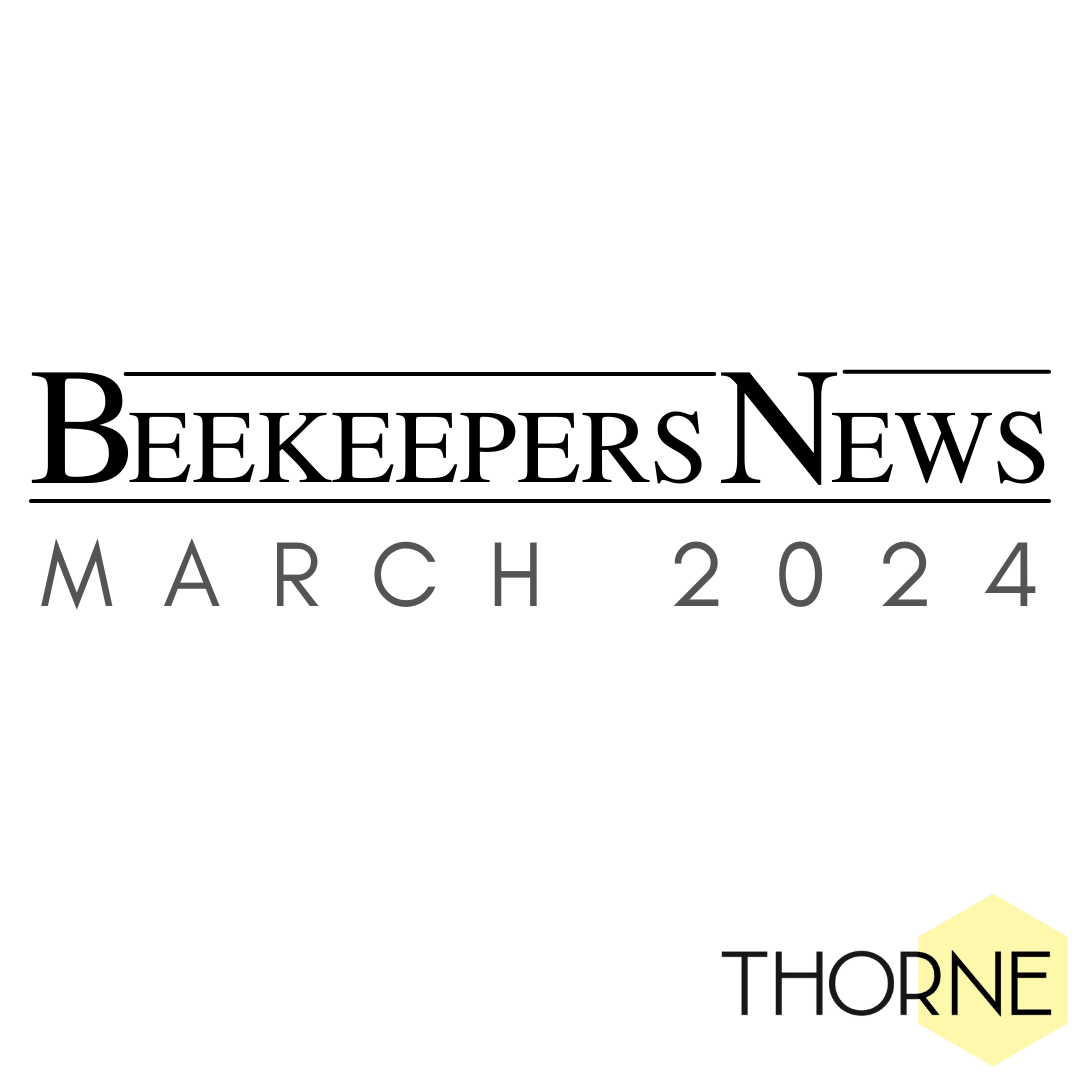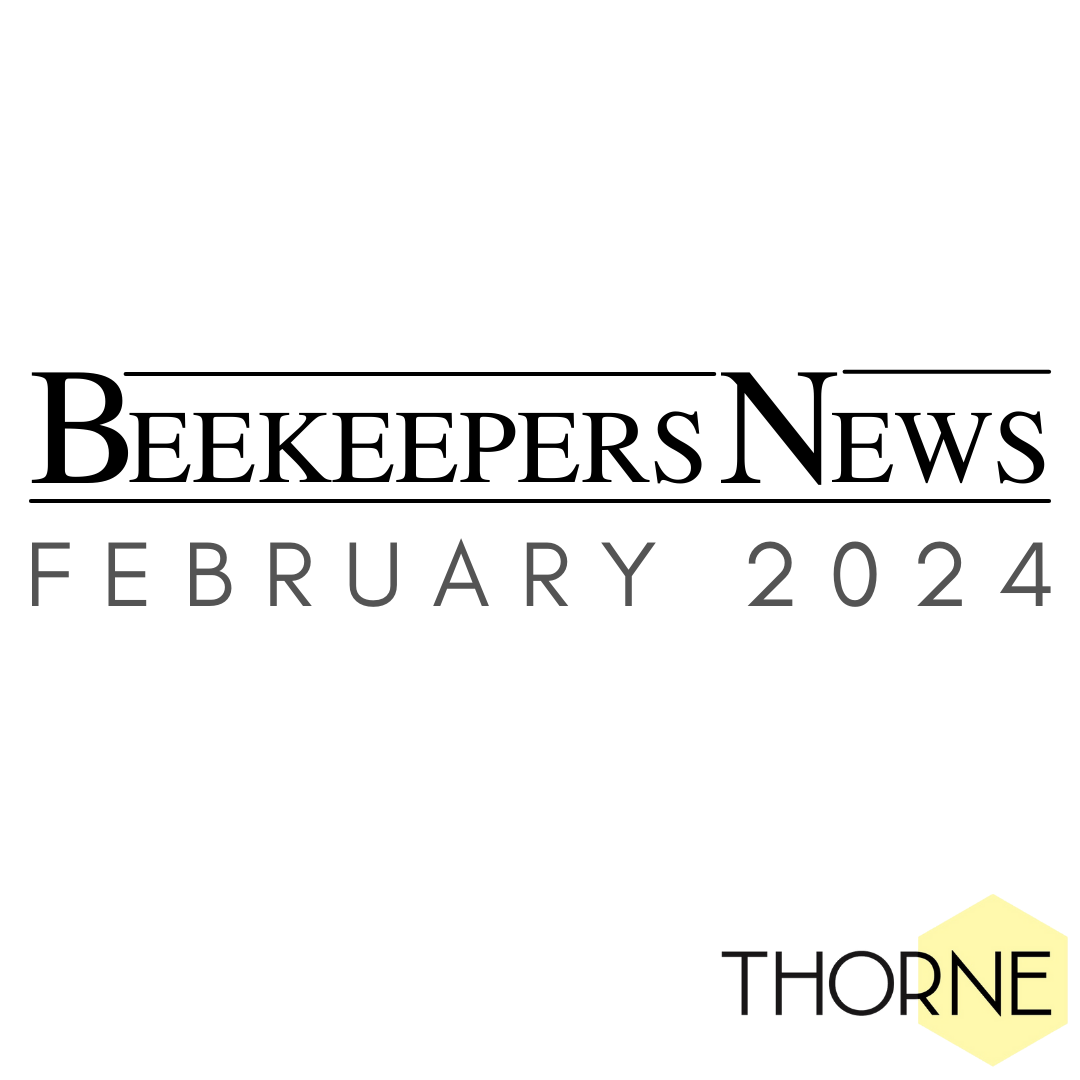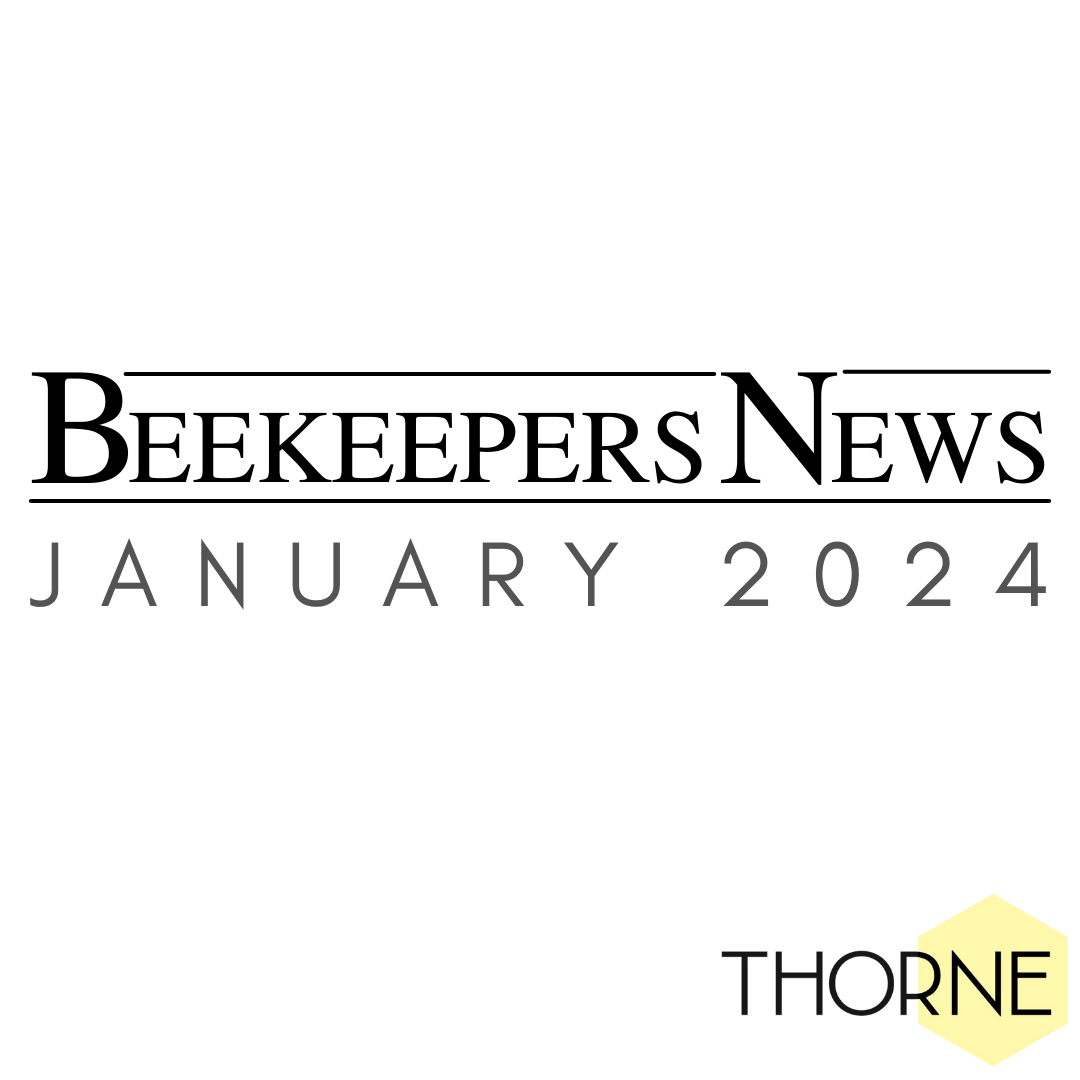July Roundup
As with most of the recent months July seems to have passed in a blur. The June gap was over quickly and the bees were soon out again making the most of the main nectar flow. The heatwave towards the end of the month didn’t seem to deter them but it is so important to make sure they have an easily accessible water source. You could even try one of our water feeders as a short term measure.
We were flat out again supplying hundreds of complete hives not to mention hive parts, frames and foundation. We even supplied 13 assembled WBC hives for a popular ITV detective show!! More information to follow……….
As expected, personalised label orders are also beginning to fly in and we are experiencing unprecedented demand for these attractive labels. Give us a call or place your order online and we will get them to you within just a few days.
As last month a big thank you for your patience. If you are waiting for an order, we are confident it will be with you very soon.
Our branch sale days are fast approaching and you can download a pdf of the list here and see more information and dates on our website. We will occasionally add items to the list as they become available so do check back.
Ask the Expert
This month John Stevens from Cirencester, the inventor of the Wasp Out – talks about how he deals with wasps in his apiaries.
Well the wasp season is well upon us and in Gloucestershire they seem to be determined to deplete every bee hive.
Wasp Out was developed over two seasons and has proved invaluable on our apiaries around Cirencester.
Whilst seeming to frustrate the wasps at first it is important to place a jam pot with a jam and water mix on each hive. I drill a 7mm hole in the centre of the lid with a number of 3mm holes around the edge.
Use the cheapest jam you can find, I use Aldi at 28p and mix with three parts water. I found an old Ambrosia jerry can useful.
Our traps are filling up within 5 days at the moment.
We also have Thornes Asian Hornet traps on each site. Fortunately no Asian Hornets but a few European ones, moths, flies and wasps have been caught.
If you have a large colony going into winter you may find the bees not able to remove the dead bees easily. This was pointed out by a local beekeeper who experienced the issue, although it may have nothing to do with the Wasp Out.
Next season we hope to offer a Wasp Out for Nucs, with different openings to accommodate a variety of makes.
John Stevens, Cirencester Beekeepers Association
Equipment Focus
Following on from our Ask the Expert article above it makes sense to concentrate on wasp prevention.
The Wasp Outs come in three different sizes to fit standard open mesh floors (405mm), budget open mesh floors (413mm) and solid floors (419mm). They cost just £6.99. We also introduced a Wasp Out for a WBC hive which is proving very popular and costs £12. Just last week we were asked for a Langstroth Wasp Out. So we now have these measuring 367mm costing £6.99.

To see a video showing how to correctly fit the Wasp Out click here
Our Wasp Banes are an alternative to the jam jar approach. In fact, we use these products around our site, particularly outside the wax plant, and they work incredibly well. The base unit is soon full of wasps – but no bees or other insects. Replacement refills can also be purchased separately.


Are you thinking about removing that last super yet? If so consider using Apivar for your Autumn varroa treatment.
Apivar is the European varroa treatment of choice and is exclusively available from ourselves. In packs of 10 strips. Each pack will treat five hives, each strip is 210x40mm wide and therefore fit neatly between the frames without having to be cut or bent as with Apitraz strips. The active ingredient is Amitraz which paralyzes the varroa mite causing it to fall off the bees.
One single application has efficacy up to 99% and there are no temperature constraints as there are with MAQS and other products. It can be used at any time of year (supers must not be on the hives). The strips are left in for between 6 and 10 weeks depending on the size of the brood.
Not to be confused with Apitraz, which is a totally different formulation and has a shelf life of only 12 months. Apivar has a shelf life of 24 months.
Beekeeping Blog
July 2019
Well, it finally feels like summer has arrived! Long hot days towards the end of this month have kept the bees very busy. It is more than uncomfortable beekeeping in hot weather but luckily our earlier hard work has paid off and there have not been so many hard jobs to carry out this July. This time of year is ideal for requeening any colonies that may need it. We have found that drone layers have been particularly abundant this year, perhaps due to the wet weather we experienced in June. The queens were ready to go out and get mated but the rain either stopped them entirely or they failed to get properly mated. So, this month we have introduced a few newly mated queens we had in reserve to get these colonies back on track. So far, so good. Wasps have been spotted out and about recently, so we are keeping a close eye on them in the apiary. Strong colonies tend to have no problem in guarding their entrance from wasps, but weaker colonies and nuclei may struggle. The wasps’ invasion of the hive and theft of stores can lead to the collapse of the colony. That is not to say that larger colonies cannot become stressed from wasps – they can – and it is important to be aware of changes in behaviour that may be a symptom of stress. The simplest thing to do is to place an entrance block into the hive to reduce the space the bees have to guard (as pictured). If you are taking honey off your hives, this is the time to add more supers if needed, remove surplus honey, get your equipment ready for extraction and replace the ‘wet’ supers back onto the same hive for the bees to refill. It is an exciting time of year and the pinnacle of many people’s beekeeping season. Just remember that it is better to remove supers when it is cooler and there are fewer bees flying (so late evening/early morning). Robbing can be a major problem anyway, without the beekeeper encouraging it with spilled honey all over the apiary and bees flying everywhere. Going into August, one of the main tasks will be to assess the varroa situation and figure out what the plan regarding possible autumn treatment may be. In addition, further inspections should reveal any colonies that look like they may not make it through the winter and we will look to unite these with another colony. Hopefully there will not be too many!

Disease Focus
European Foulbrood
EFB is a notifiable disease caused by the bacterium Messilococcus plutonius. Present in the UK, EFB is a serious disease of honey bee larvae. It is most likely to affect weak or stressed colonies, which may be caused by hive movement, climatic conditions such as cool and wet weather conditions, or poor nutrition.
Causes
Larvae become infected when they consume food contaminated with M. plutonius. The bacteria multiply within the larval gut, competing with it for food. They remain in the gut and do not invade larval tissue; larvae that die from the disease do so because they have been starved of food.
Symptoms
First signs may be a patchy brood pattern and perhaps a sour smell. Larvae appear off colour and misshapen with a ‘melted’ appearance, slumped unnaturally in their cells. The yellow/white bacteria in their gut may be visible through their translucent body wall. After the larvae have dried out, the remnants turn into rubbery dark brown scales that are easily removed from cells. Most infected larvae will die before the cells are capped but some may die afterwards. In these cases, there may be sunken, perforated cappings resembling AFB infection. The cells’ contents may also be brown and sticky, but they cannot be drawn into a long ‘rope’ as with AFB.
Spread

Larvae slumped in cells and ‘melted’ in appearance

Patchy brood pattern with off-colour larvae
The main culprit in spreading EFB bacteria is the beekeeper. It can be spread by transferring combs, honey or hive equipment from infected colonies to healthy colonies. Migratory beekeeping i.e. moving healthy colonies into close proximity of infected apiaries can spread disease, as can the purchase of infected bees.
However, bees can also spread the bacteria themselves. Robbing bees can infect a healthy colony if they visit an infected hive. Swarms from infected colonies may carry infection with them and become diseased after they are hived.
Diagnosis
If you suspect your hive or hives have EFB, contact your local bee inspector who will confirm it in the field using a Lateral Flow Device. Occasionally, sample brood combs are sent to the NBU laboratory where larval gut contents are examined for the presence of the bacterium.
Control
European Foulbrood is a notifiable disease that legally requires beekeepers to inform the National Bee Unit if they suspect their colonies to be infected. Weak colonies and colonies with a high proportion of diseased brood are destroyed. Lightly diseased colonies may be considered for a shook swarm but if it is decided the conditions and weather are unfavourable, only then would an antibiotic treatment be considered. Treatment must be carried out only by an Appointed Officer. Here is a link to the National Bee Unit Inspector contacts page:
View National Bee Unit Bee Inspector contacts page
Bees for Development Update
Honey for Health Project, Sierra Leone
Next month the Director of Bees for Development Ghana, Dr Kwame Aidoo, will travel to Sierra Leone to help establish our new honey for health project. He is travelling to Masanga hospital which is well known in the region for its treatment of chronic wounds. The main treatment they offer uses honey, which has been scientifically proven to cleanse and help prepare wounds for the next stage of treatment - skin grafts. Honey however is a rare product in Sierra Leone: when it is available it has been either diluted with water or sugar, making it much less effective. Besides this, the honey available is very expensive. As the demand for this type of treatment grows, the hospital is looking for a better, permanent supply of honey for the hospital to use.
Together with Bees for Development Ghana, they will establish a new bee farm in the nearby Masanga village, which will provide the hospital with honey for wound care, jobs for its inhabitants and beeswax for the production of other usable products such as candles. You can read more about our work in Ghana and the region here
Treatment free beekeeping with Dr Leo Sharashskin
Join us for a unique weekend on natural, treatment free beekeeping in horizontal hives with Dr Leo Sharashkin of Missouri, USA, on Saturday 5 and Sunday 6 October 2019 at the famous ‘Shire Hall’ Monmouth, NP25 3DY.
Over the course of the weekend, you will learn how honey bees live in the wild and how we can mimic their ways in our managed hives. Day one will focus on natural beekeeping; the importance of using local bees, how to successfully attract swarms and a discussion on what is the ‘ideal beehive’. Day two (advanced beekeeping made easy) will cover a wide range of subjects such as: How to care for our bees throughout the year, honey bee health and treatment free beekeeping, and practical ways beekeepers can minimise their interventions for sustainable low input-apiaries. Participants can attend either or both days.
For the full course description and to book online, please click below
National Honey Show News
The summer is flying by, and the show will soon be upon us.
We hope all you keen competitors are trying out your skills at your local association, and county shows. Good practice for the best show of all! In fact it’s time to start planning your entries for the early classes, ie those that have to be sent to judges in advance of the show. Don’t leave it to the last minute, plan your entries now and look for the 2019 entry form when it is published on the website and Schedules are posted to members early in August.
Very last day for entry forms for early classes, which include essays, videos, microscopy slides and photographs is 7th September as they need to be with the appropriate convener by 23rd September. Juniors are welcome to enter these classes as well as their own classes.
Entry Classes and Activities for children:
Junior Entry form:
Each year we invite researchers to join us in the trade and educational hall in our mini ‘research park’. Last year we had a display about a relatively new bee to the British Isles, the Ivy Bee. August/September is the time to spot them emerging from nests in the ground. They have a short life span before laying eggs which hatch, feed and pupate, ready to emerge late summer next year. This year The Botanical Gardens of Wales and beekeepers from RHS Wisley will join us for the 2019 National Honey Show Research Park.
Look forward to seeing you at this year’s show.
National Honey Show Thursday 24th to Saturday 26th October 2019 at Sandown Park Racecourse, Esher, Surrey KT10 9RT
Upcoming Events
Newburgh Sale Day – Friday 9th and Saturday 10th August
Windsor Sale Day (date now confirmed) – Saturday 7th September
Stockbridge Sale Day – Saturday 21st September
Devon Sale Day – Saturday 28th September
Rand Open and Sale Day – Saturday 12th October
National Honey Show – 24th-26th October





